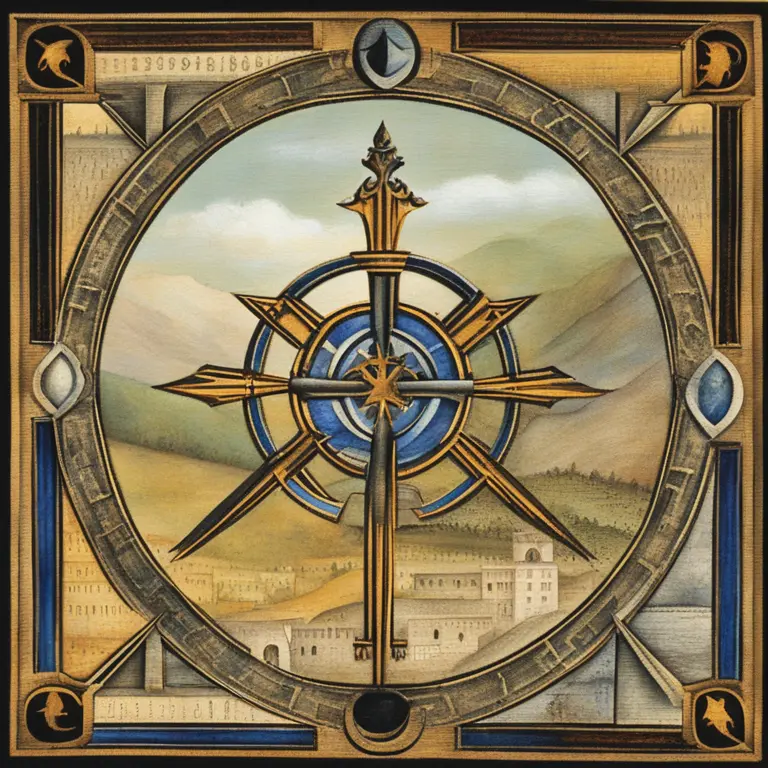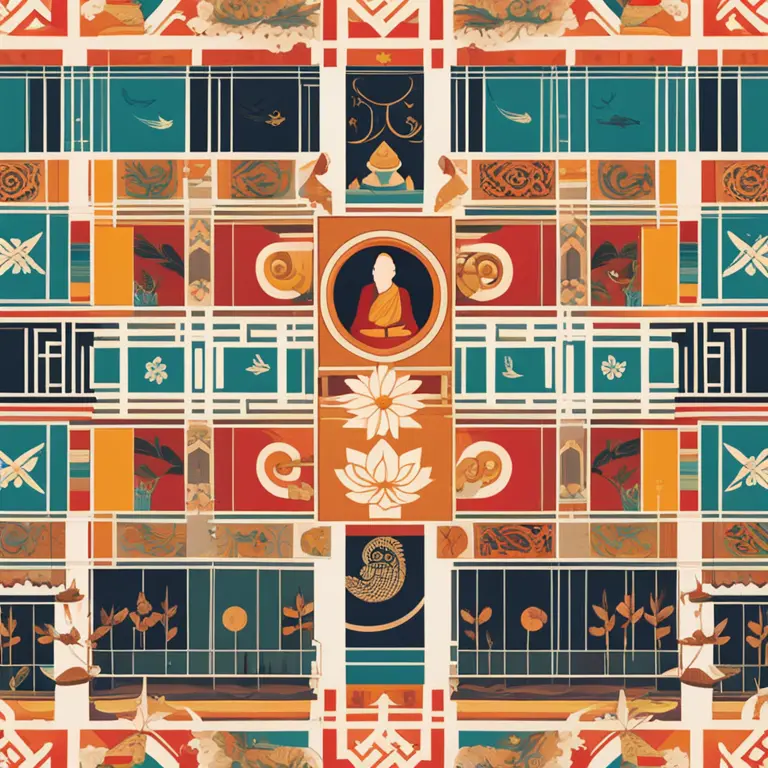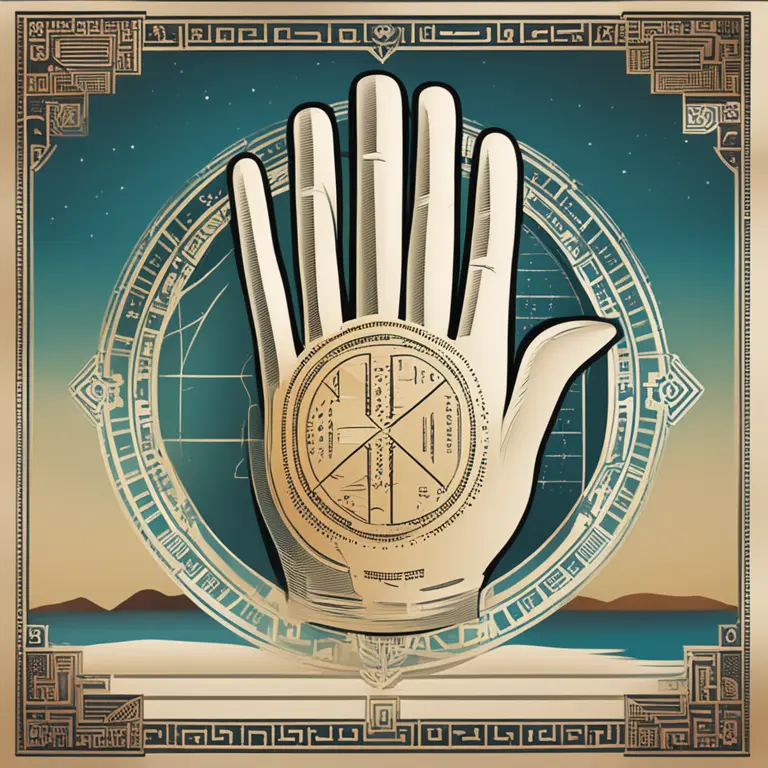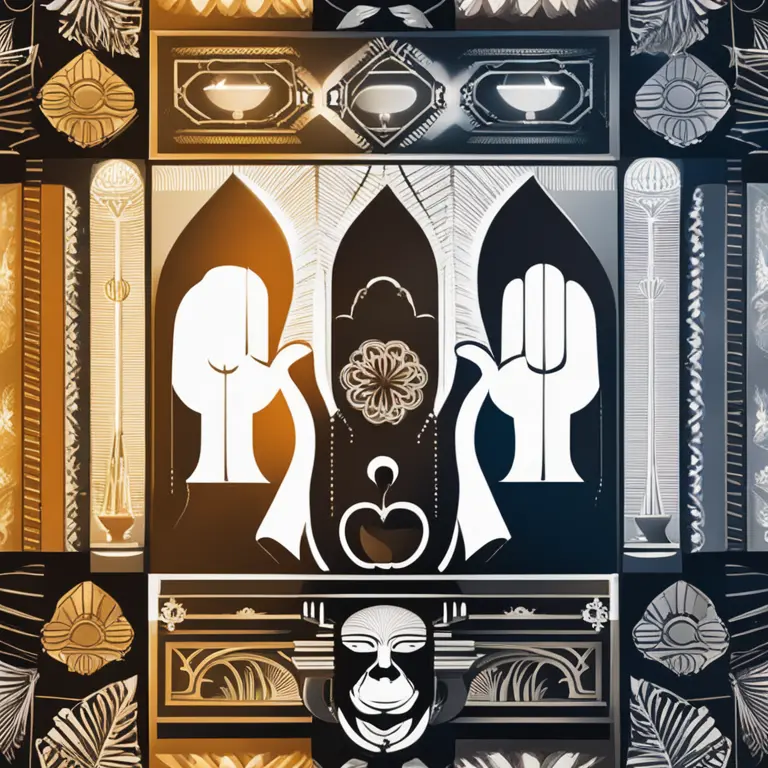
Exploring The Origins of Palmistry
Delve into the fascinating history of palmistry, from its mysterious beginnings to its presence in the modern world of esoteric wisdom.
article by Nora Pennington
The Historical Roots of Palm Reading
Palmistry, also commonly referred to as chiromancy, is a practice with ancient origins that has intrigued humans for millennia. This form of divination involves studying the palm of an individual's hand to interpret personality traits and predict future events. While the precise genesis of palmistry is shrouded in time, historical records suggest it may have originated in India during the Vedic period. It is believed that from India, the art of palm reading spread to China, Egypt, and ancient Babylon, weaving a rich tapestry of cultural interpretations and methods.

Indian and Chinese Influences
In India, palmistry is closely intertwined with astrology, and it is thought to have been practiced by the Brahmins, the highest caste in the Vedic social order. Indian palmistry laid the groundwork for many of the principles still used today. Meanwhile, China's own version of palmistry developed around the same period and placed emphasis on the reading of not just palms, but also the shape of fingers and nails. These intricate methodologies highlight the unique way in which different cultures embraced and adapted palmistry to their own spiritual and divinatory customs.

Greek Expansion and Philosophical Adoption
Palmistry's influence extended to ancient Greece, where the philosopher Anaxagoras is known to have shown an interest in the study. Later, the famous philosopher Aristotle discovered a treatise on palmistry that he subsequently presented to Alexander the Great. The young conqueror took a keen interest in examining the lines of his officers' hands. Aristotle's writings indicate that he considered the hands to be a crucial tool for revealing a person's character, thus integrating palmistry into the Greek philosophical tradition.

Medieval Resurgence and Oppression
Although the practice faced opposition during the Middle Ages, as the church largely condemned it, palmistry survived largely through the work of mystics and travelers. The era's intellectual climate often posed a threat to the preservation of esoteric knowledge such as palmistry. However, its covert practice continued, and palmistry readings were offered surreptitiously to those seeking insight beyond the physical realm. It was during the Renaissance that palmistry began to reemerge more publicly, along with a renewed interest in ancient sciences and mysticism.

Modern Revival and Acceptance
It wasn't until the 19th century that palmistry experienced a widespread revival in the West. Figures such as Captain Casimir Stanislas D'Arpentigny and William John Warner, also known as Cheiro, brought palmistry to the attention of the Victorian elite, publishing books and offering readings to high society. Their work solidified the practice as a popular form of entertainment and self-discovery. Today, palmistry continues to evolve, blending traditional techniques with modern psychological insights. Its practice, no longer secretive or stigmatized, has been embraced by a global audience eager to explore the wisdom held in the palms of their hands.
Palmistry in the Information Age
In the era of technology and information, palmistry, like many other esoteric practices, finds a new home on the internet. Currently, websites provide virtual readings, and applications utilize algorithms to interpret palm lines. The accessibility of palmistry has increased significantly, and its audience has expanded to include digital natives and enthusiasts from all walks of life. As we step into the future, the fascination with what our palms might reveal continues, proving the timelessness of this ancient art.
Published: 1/11/2024
Modified: 1/12/2024
More predictions
Come back here soon to learn more about yourself and your future


Can We Trust Palmistry?
Delving into the realm of palmistry, this article examines its credibility and place in contemporary spiritual practices.


Can Palmistry Predict Your Path Incorrectly?
Delving into the accuracy of palm readings, this article examines whether palmistry can lead to incorrect predictions about one's life and destiny.


Palmistry: The Historical Overview
Delve into the dawn of palmistry and trace its journey through the corridors of time, uncovering the roots of this ancient practice.